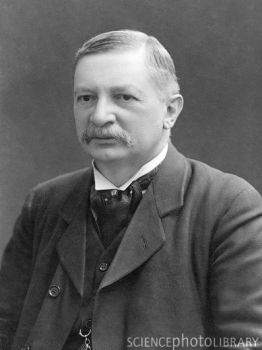<Back to Index>
- Physicist Johannes "Janne" Robert Rydberg, 1854
- Poet Teofilo Folengo (Merlino Coccajo), 1491
- General of the Imperial Japanese Army Tomoyuki Yamashita (The Tiger of Malaya), 1885
PAGE SPONSOR

Johannes Robert Rydberg, (‘Janne’ to his friends), (November 8, 1854 – December 28, 1919), was a Swedish physicist mainly known for devising the Rydberg formula, in 1888, which is used to predict the wavelengths of photons (of light and other electromagnetic radiation) emitted by changes in the energy level of an electron in a hydrogen atom.
The physical constant known as the Rydberg constant is named after him, as is the Rydberg unit. Excited atoms with very high values of the principal quantum number, represented by n in the Rydberg formula, are called Rydberg atoms. Rydberg's anticipation that spectral studies could assist in a theoretical understanding of the atom and its chemical properties was justified in 1913 by the work of Niels Bohr (hydrogen spectrum). An important spectroscopic constant based on a hypothetical atom of infinite mass is called the Rydberg (R) in his honour.
He was active at Lund University, Sweden, for all of his working life. The crater Rydberg on the Moon and asteroid 10506 Rydberg are named in his honour.
There is a pub held in Rydberg's honor every Wednesday at the faculty of physics at Lund University.